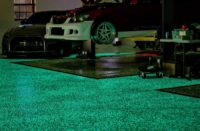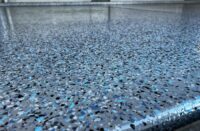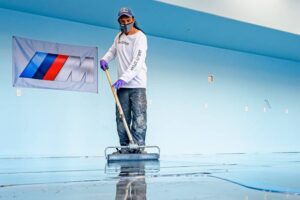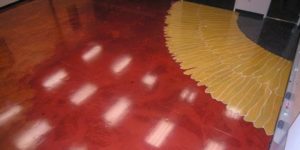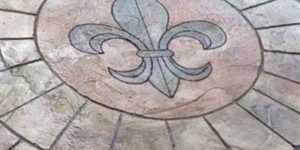
The diverse array of coating technologies gives specifiers and users plenty of choices. How, then, to proceed?
“Coating materials have differing effects on decorative concrete,” says Matt Blackburn of Key Resin Co. In addition to cost and performance quality, he strongly suggests “contractors test the wetting effects of each coating they are interested in using in conjunction with their preferred decorative concrete substrate. Coatings can wet out substrates at different speeds and enrich colors in different ways.”
Shawn Wardall of Specialized Construction Services adds another important consideration to Blackburn’s list of quality, time and budget: The client’s expectations.
“What makes this difficult is that most often, they don’t know,” Wardall says. “I spend a lot of time educating my clients to make it easier for them to answer this question. To begin the process, you have to first listen well to what they think they want. I often feel like a pharmacist listing out the pros and cons of each solution.”
For example, he says, “This last summer we completed the floors in a salt-float facility where the designer had shared with us some pictures of a stained floor,” downloaded from the Internet, “and wanted that look.”;
The specification called for polished concrete, “but due to the corrosive nature of salt and the potential of slip and fall issues, we completed this floor using a metallic epoxy with a urethane topcoat. A slip-resistant additive should always be used on a floor like this, so we added what we typically use on garage floors. Unlike our previous customers, right away we had complaints that the floor was slippery.”
Being a bit perplexed by the claim, Wardall says he had the floor tested and learned that salt water is more slippery than regular water. “So we increased the small texture agent in a final topcoat and have had no further complaints.”
The take-away? Listening to how the customer wants the floor to look and zeroing in on the technology used to deliver it provides a starting point for discussion. However, choosing the correct method and materials may deviate significantly from initial concepts.
Cory Hanneman of Element 7 Concrete Design Inc. in Granite Shoals, Texas, says stained and polished installations are his bread and butter, but coatings come into play when chemical-resistance muscle is paramount.
“Do they need slip resistance or is easy cleaning more important?” he asks. “Is thermal shock an issue? We have a couple of urethane mortar jobs we did because they planned on using very hot water to clean a cold surface and epoxy doesn’t do well with that.
“Is it a custom art piece or something that needs to be duplicated consistently?” he continues. Artistic freedom on one project may contrast with a specification for precise uniformity on another.
In other words, ask a lot of questions, Hanneman says. “Make sure a transcript of your side of the conversation contains at least twice as many question marks as periods.”
Adding to the challenge of choosing materials is the constant evolution of coatings, often as a result of regulatory mandates. For example, “I used to be able to use a moisture-cured urethane that I never had a complaint about other than the smell when applied. But government regulation has rendered that coating obsolete,” Wardall says.
“Unfortunately, there is no perfect solution. There is no bucket of magic. We simply have to do the best we can to keep educated on what is available, and communicate with our clients.”
